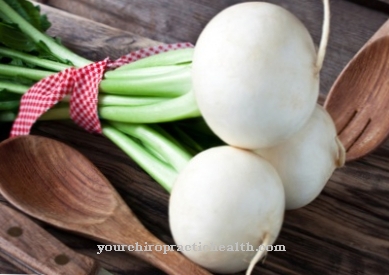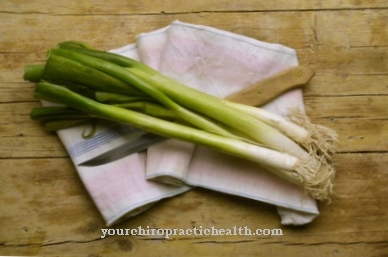Parmesan is an Italian hard cheese and is one of the most famous cheeses in the world. Italian cuisine is unimaginable without parmesan. It is usually grated or sliced into wafer-thin slices.
What you should know about parmesan

The word “parmesan” is a simplification of the term Parmigiano Reggiano. In his native Italy, the cheese is used exclusively as Parmigiano designated. "Parmigiano Reggiano" has been carrying the EU DOP seal since 1996 as proof that it comes from the Emilia Romagna region.
The center of cheese production is in the Emilia-Romagna provinces of Parma, Modena and Reggio Emilia. The cows graze in a protected area, the “Zona Tipica”, in which only grass and, if necessary, hay can be fed. The addition of milk-promoting feed additives is not permitted. According to an EU ruling in 2002, cheeses that do not come from Emilia-Romagna are considered plagiarism. Parmesan has been produced for over 800 years, and the method has hardly changed. Parmigiano was first mentioned in writing in the writings of Giovanni Boccaccio.
In his collection of novels "Dekameron", which was created between 1349 and 1353, he described a scene in which people "stood on a mountain of grated Parmesan cheese" and made ravioli and macaroni. 512 dairies are now affiliated with the Parmesan cooperative. Parmesan is made exclusively from cow's milk. According to an old recipe, the milk from the evening milking is kept in copper kettles. By morning the fat had settled on the top. It is skimmed off and the resulting skimmed milk is used to make cheese. The excess whey that is created during the manufacturing process goes to the pig fattening for the production of the Parma ham.
After completion, the loaves must be stored in air-conditioned cellars for at least twelve months. The average maturation period is two years. During the ripening process, the cheese must not form holes, after a year Parmesan experts check the quality of the cheese. Parmesan belongs to the hard cheese type "Grana". Grana means “grainy” and its consistency differs significantly from other hard cheeses. Parmesan is offered in different degrees of ripeness, the oldest ripens for 72 months, is called "Extra Stravecchione", is rare and is considered a precious specialty.
Importance to health
100 grams of Parmesan cover the daily calcium requirement. Parmesan is therefore good for bones and teeth and also prevents osteoporosis. It is also considered easy to digest. Parmesan is made from raw milk. Pregnant women are advised to eat little raw milk cheese, as it can contain pathogens such as listeria.
However, due to the ripening time, all pathogens are killed in Parmesan. Parmesan is therefore also considered safe for pregnant women. Italian research has also shown that Parmesan permanently lowers blood pressure because Parmesan contains tripeptides. These are small proteins that have an ACE-inhibiting effect and achieve the same results as drugs. The antihypertensive effect occurs when 30 grams of Parmesan are included in the meal and consumed every day. The effect can be measured after eight weeks and remains with daily consumption of Parmesan. People who are lactose intolerant are allowed to eat parmesan. Due to the long ripening period, Parmesan is considered to be lactose-free.
Similar to nuts, parmesan has a high nutrient density. That is why even small amounts fill you up. Parmesan can prevent hunger pangs. Because it is low in cholesterol, Parmesan is generally considered to be one of the healthiest cheeses around.
Ingredients & nutritional values
| Nutritional information | Amount per 100 gram |
| Calories 431 | Fat content 29 g |
| cholesterol 88 mg | sodium 1,529 mg |
| potassium 125 mg | carbohydrates 4.1 g |
| protein 38 g | Fiber 0 g |
Parmesan has between 29 and 60 percent fat, depending on the degree of ripeness. The amount of calories also depends on the fat content. An average Parmesan has 34 grams of fat and 440 calories per 100 grams. In addition to a complex of B vitamins, Parmesan contains vitamins A, C, D, E and K.
Parmesan is a source of beta-carotene, calcium, potassium, magnesium and other minerals. Parmesan contains trace elements such as fluorine, copper and manganese. Although Parmesan is high in fat, the cholesterol levels are very low at 0.3 grams per 100 grams of cheese. The fat is composed of saturated, monounsaturated and polyunsaturated fatty acids.
Intolerances & allergies
Parmesan, like all cheeses that mature for a long time, contains a large amount of histamines, which can lead to a long range of problems in histamine-intolerant people. Histamine intolerance is considered a pseudo-allergy; symptoms can range from nettle rash to hay fever and asthma.
Histamine intolerance is often only noticeable when multiple triggers are taken at the same time. For example, the combination of Parmesan cheese and red wine can lead to a seizure. Parmesan contains natural glutamate, which can cause headaches and the notorious “Chinese Restaurant Syndrome” in some people. However, many foods contain similar amounts of natural glutamate, so it is believed that only a small number of people are affected.
Shopping & kitchen tips
When buying Parmesan, a distinction must be made between Parmigiano-Reggiano and Grana Padano. In contrast to Parmigiano-Reggiano, Grana Padano may come from the entire Po Valley and almost all of northern Italy.
Grana Padano is just as suitable for inexpensive pasta dishes as the real Parmigiano. Research has shown that Grana Padano is on a par with Parmigiano-Reggiano. Gourmets prefer the original Parmesan cheese, which is marked with the seal. The longer the parmesan was allowed to ripen, the more expensive it is. The three-year-old Parmesan is particularly popular among gourmets. Old and expensive Parmesan cheese loaves are not cut and grated, they are pierced and then broken into pieces. Sliced Parmesan cheese should not be wrapped in cling film, otherwise it will start to sweat and go moldy.
It is best wrapped in baking paper or in a kitchen towel and placed in a can. The can should be in the refrigerator. The cheese can be kept there for many months. If there is a teaspoon of salt in the can, the salt content is not removed from the cheese. In addition, the salt absorbs all possible moisture. Parmesan is very suitable to be grated and frozen. It can be worth grating larger portions and freezing them in smaller portions, then fresh, grated Parmesan is always available, which can be used without long defrosting times.
Preparation tips
When used fresh, Parmesan should always be grated just before consumption. Parmesan goes well with all pasta dishes and also belongs in risotto. Pasta dishes with a fish sauce are eaten without parmesan. A special variant consists in slicing the cheese into wafer-thin slices on a slicer.
The cheese slices go well in the traditional Caesar salad or on thinly sliced beef fillet slices that are served as a carpaccio. In Italy, fennel with grated Parmesan is also a recipe classic. Since old Parmesan is not cut, but broken, there are special Parmesan crusher with a short, pointed edge.
























.jpg)



